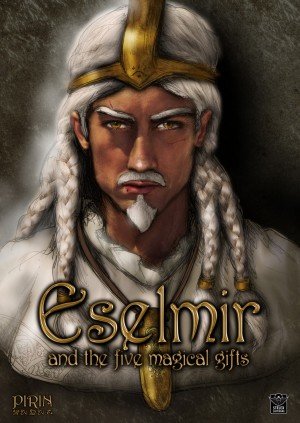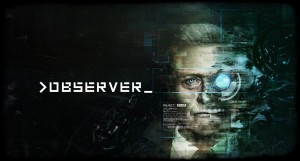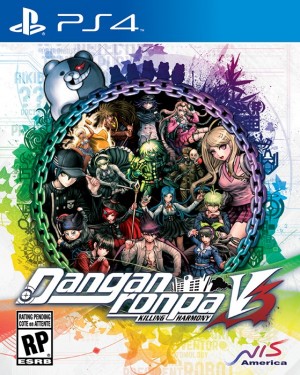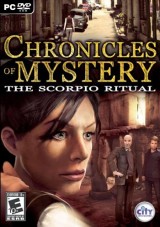Review for Eselmir and the five magical gifts page 2
Can a story where the main character is a priest whose biggest attribute is patience actually be entertaining? Eselmir and the five magical gifts is that story, an adventure in high fantasy that follows the exploits of the eponymous cleric as he attempts to find the lost treasures of a long dead king, who also happens to be the ancient ancestor and founder of Eselmir’s people. It’s a game rich with an almost endless depth to its lore, but one that relies so heavily on text-heavy exposition that it will require as much patience from the player as it does from its protagonist, detracting somewhat from the overall experience.
Eselmir is a priest of the goddess of time, Monusadah the Chronologist, and belongs to the Pirin, a race of people descended from King Theoson and his fairy partner. As reward for being the goddess’s favoured servant, Eselmir is granted a vision and the opportunity to undertake the great quest set before him by Monusadah herself. The treasures are known to have been buried with the king, but it’s not as simple a task as going to the grave and digging them up. Nobody knows where Theoson was buried, of course!
Eselmir himself is a well-conceived character who feels real and has clearly led a deep and interesting life before the current adventure begins. Right from the start you’ll begin learning his layered backstory, largely through the established relationships he has throughout the citadel with his parents, mentor, and fellow priests. I found it a pleasant change to be playing a holy man whose main attribute is patience, as opposed to the usual medieval fantasy fare of a warrior, thief or magician.
The first major task is to work out where King Theoson is said to have been buried. This involves research in the library, which unlocks further clues and in doing so opens up new areas that you can visit. This is an ongoing theme throughout the game, where particular locations are gated off, preventing you from entering until you’ve finished everything you need to do where you are, while some areas don’t open until you’ve completed portions of other quests first. While this is a common design feature in adventure games to control the pace of the story, here it feels overused and can be frustratingly arbitrary.
It’s obvious from very early on that you will need to leave the citadel, and even the realm of Lothriel where the citadel is located. Unfortunately, you can’t depart until you’ve found all the equipment for your journey on the list your mother has given you. To do so you have to visit certain places such as the stables. But the stables are one of those gated areas, where trying to enter them before you’re allowed results in a message saying you’ll need to come back later. Even though you know you need a horse to leave the realm, and the stables are the obvious place to get one, you can’t enter them until you’ve progressed far enough in your ‘secondary’ quest to discover who killed your betrothed Jeselion many years earlier. It’s only by accepting this secondary quest, which is marked as optional in your quest diary but in fact isn’t optional at all, that you are given access to the stables and garden.
In part because of this rigid gatekeeping, the story unravels slowly. While I’ll leave it to players to decide whether they like such a deliberately-paced adventure, I personally found it to drag unreasonably, especially in the first portion of the game. Another reason for this gradual progression is that there are two layers to the story. The first is the main storyline of going out into the world and finding the five lost treasures. The subplots, which end up taking more of your attention than the main adventure, involve delving into the rich and extremely dense backstory of Eselmir and this world.
These supplementary missions don’t feel like they have any bearing on your main objectives, although they do come together towards the end of the game and the information you learn serves in completing your primary goals. For instance, after talking to your father in his workshop, you are given the task of finding the missing pages of his diary, another ‘optional’ quest you really have to complete as it will provide helpful details about Eselmir’s earlier life. The information you find is interesting, and it eventually becomes relevant to the larger narrative arc, but at the time it feels like you’re being sent on a random scavenger hunt with no relevance to what you’re actually trying to do.
A large number of characters Eselmir encounters have their own personalities and motivations. As part of your quest to uncover the reason your lost love Jeselion was killed, you have to talk to the three other suitors who challenged you for her hand. Of the three, Xellbelard the Esquire is a rude and abrupt man, still angry over what he sees as you unfairly winning Jeselion’s love, while Elnhirazafool the Astronomer is at peace with her choice (and her death), knowing that he can’t change what has already happened. These sorts of characters are refreshing to talk to, quite different than the more standard fantasy characters who tend towards always being helpful.
One aspect that separates Eselmir from a lot of its contemporaries is its depth of lore. The game itself is derived from the fantasy saga Pirin by Sebastiano B. Brocchi. I’ve not read these novels, and I think that contributed to struggling to get my head around the dozens of names and events that are referenced here. There are over a dozen gods in this universe, each responsible for its own area: Ghaladar the Shining rules over light and thunder, for example. The gods are important to the story, though in various ways. Monusadah gives you your mission and helps you occasionally in times of crisis, while others like Ladin actively attempt to thwart your quest.
While the depth of lore is commendable, it results in a copious amount of reading required. Very few conversations are short. It’s much more common to find yourself reading paragraphs of dialog that should have been written in a more accessible manner. Add to this the number of books, tomes and scrolls you have to pore over to gather clues on how to progress, some of which are a half-dozen pages or more in length. It can be daunting and could easily turn some players off altogether, especially as some of the heavy reading occurs in the opening portion of the game. I’d go so far as to suggest that the amount of reading required is a major reason Eselmir took me 15 hours to complete. The choice of script-style font is questionable too, as it can be a little difficult to read, especially when there are large blocks of text to get through.
There are a number of ‘fetch this item so I’ll give you this other item’ quests, which is standard in most adventures, but there are also quite a few puzzles that are varied and definitely one of the highlights of the experience. Throughout the game you find yourself playing a flute, uncovering hidden clues, solving riddles for invisible beings, opening a secret passage by pressing wood panels in a specific order, and exploring a maze. None of these obstacles feels forced into the game but flow naturally from the story.
The controls for Eselmir and the five magical gifts are quite simple, with a left mouse-click for walking and interacting and right-click cycling through cursors as you hover over hotspots. One nice feature is a form of fast travel, with double-clicking causing Eselmir to run instead of walk, but this becomes almost essential since many locations are long, scrolling slowly as Eselmir moves through them. This is compounded by the fact that the game is not optimized for widescreen monitors, displaying only in the middle of the screen with black borders to either side.
The inventory system is quite unique and streamlined. Eselmir can pick up objects he finds useful and you’re able to examine them in your hidden inventory located at the top of the screen. Item use isn’t handled in the way we’ve come to expect from adventure games, however, where the player selects what they wish to use in the environment. Instead, the correct inventory item is automatically made available in the right-click cursor cycle if relevant to a particular hotspot in solving a puzzle. For example, while looking at the walls in the Hourglass Tower you simply right-click through the available cursor options to find the ‘lens for invisible beings’ which is the correct object to use at that location. It’s quite a good system, but it does simplify inventory use to the point where it becomes almost redundant. If you have the right item, it’s just a matter of cycling through the available options until it comes up.
Eselmir includes two levels of hints offered through the quest log, although neither are enabled by default. While the log itself gives you the broad outline of what you’ve undertaken, clicking for hints reveals different kinds of clues, from the most basic to a point-by-point breakdown. The simplest clue for the diary page quest just reveals that the pages have been lost and could be scattered anywhere, but the advanced hint indicates exactly who to speak to first. While both levels are optional, they can help to overcome some of the more obscure challenges that pop up.
Virtues such as patience, steadfastness and order represent another aspect of the game, bestowed upon Eselmir by the gods. Some are quite easily earned – simply reading a book in the library grants one, for example – while others require you to complete quests or challenges. The most useful is guidance, which allows you to use the spacebar to reveal all the hotspots in a scene, while the rest are treated like another type of inventory, able to be selected and used when appropriate in the same manner as items.
The graphics in Eselmir are all hand-drawn sketches and look completely amazing. The colours and pencil lines give the whole visual look a very strong, distinctive feel. There’s also a wide variety of locations depicted, from city streets to holy temples, catacombs to towering gates built into a cliff face. One area I particularly enjoyed was an underwater scene with a sunken ship and vibrant underwater life.
Where the game falls down graphically is its animations. The characters are drawn in the same scrawled style as the backgrounds, but the animations are rudimentary at best and non-existent at worst. Eselmir’s walk has an obviously limited number of animation frames, and most actions are either displayed with a very small number of frames or none at all, with only a narrator message telling the player what has happened. Climbing a ladder consists of nothing more than the protagonist appearing at the bottom of the ladder and then again at the top, while taking a book from the library shows no movement whatsoever.
The game starts with a song playing over the opening menu that tells the story of Eselmir. It’s well performed and a nice addition to a soundtrack that is generally pretty good with a welcome variety of tracks, usually different for each area. The music has a medieval feel to it, achieved through a mix of synthesisers, acoustic guitar and occasionally vocals. The cutscenes are voiced and the acting is perfectly adequate, nobody really standing out as exceptional or awful. The game itself is only subtitled, sadly, and while not a surprise with a script this extensive, it does detract from the experience as I expect modern adventure games to be fully voiced.
While the same can be said of any adventure, Eselmir in particular certainly isn’t for everyone. It is a serious, high fantasy epic, and the depth of lore and volume of information should appeal to those who enjoy a long, slow-paced game, the likes of which the genre rarely gets anymore. Unfortunately, while the distinctive hand-sketched backgrounds are exceptional, with a lot of diverse locations filled with intriguing characters to explore, the poor or non-existent animation lets the visual presentation down and the lack of full voice acting is noticeable given the extensive amount of reading required.
So, can a story where the main character is a priest whose most notable attribute is patience actually be entertaining? The answer is a qualified yes. Eselmir and the five magical gifts is a substantial game with a number of noticeable weaknesses that do hinder the experience, yet for fantasy fans with a penchant for reading deep, involved tales, it’s definitely worth playing to immerse yourself deeply in such a rich and varied world.































